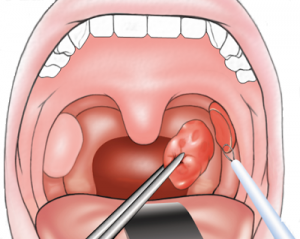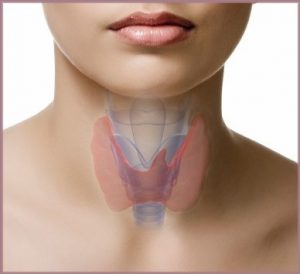Tonsillectomy is the surgical removal of the tonsils, two oval-shaped pads of tissue at the back of the throat — one tonsil on each side.

A tonsillectomy was once a common procedure to treat infection and inflammation of the tonsils (tonsillitis). Today, a tonsillectomy is usually performed for sleep-disordered breathing but may still be a treatment when tonsillitis occurs frequently or doesn’t respond to other treatments.
Recovery time for a tonsillectomy is usually at least 10 days to two weeks.
Original article from Mayoclinic.com
- Recurring, chronic or severe tonsillitis
- Complications of enlarged tonsils
- Bleeding of the tonsils
- Other rare diseases of the tonsils
- More than seven episodes a year
- More than five episodes a year in each of the preceding two years
- More than three episodes a year in each of the preceding three years
- Difficulty breathing
- Disrupted breathing during sleep
- Difficulty swallowing
- Cancerous tissue in one or both tonsils
- Recurrent bleeding from blood vessels near the surface of the tonsils
Reactions to anesthetics. Medication to make you sleep during surgery often causes minor, short-term problems, such as headache, nausea, vomiting or muscle soreness. Serious, long-term problems are rare, though general anesthesia is not without the risk of death.
Swelling. Swelling of the tongue and soft roof of the mouth (soft palate) can cause breathing problems, particularly during the first few hours after the procedure.
Bleeding during surgery. In rare cases, severe bleeding occurs during surgery and requires additional treatment and a longer hospital stay.
Bleeding during healing. Bleeding can occur during the healing process, particularly if the scab from the wound is dislodged too soon. Infection. Rarely, surgery can lead to an infection that requires further treatment.
- Medications. Take pain medications as directed by your surgeon or the hospital staff.
- Fluids. It's important to get plenty of fluids after surgery to avoid dehydration. Water and ice pops are good choices.
- Food. Bland foods that are easy to swallow, such as applesauce or broth, are the best choices immediately after surgery. Foods such as ice cream and pudding can be added to the diet if they're tolerated. Foods that are easy to chew and swallow should be added to the diet as soon as possible. Avoid acidic, spicy, hard or crunchy foods as they may cause pain or bleeding.
- Rest. Bed rest is important for several days after surgery, and strenuous activities — such as running and bike riding — should be avoided for two weeks after surgery. You or your child should be able to return to work or school after resuming a normal diet, sleeping normally through the night and not needing pain medication. Talk to your doctor about any activities that should be avoided.
- Bleeding. You may see small specks of dark blood from the nose or in the saliva, but any bright red blood requires a trip to the emergency room for a prompt evaluation and treatment. Surgery to stop bleeding may be necessary.
- Fever. Call your doctor if you or your child has a fever of 102 F (38.9 C) or higher.
- Dehydration. Call your doctor if you observe signs of dehydration, such as reduced urination, thirst, weakness, headache, dizziness or lightheadedness. Common signs of dehydration in children include urinating fewer than two or three times a day or crying with no tears.
- Breathing problems. Snoring or noisy breathing is common during the first week or so of recovery. However, if you or your child is having difficulty breathing, get emergency care.
